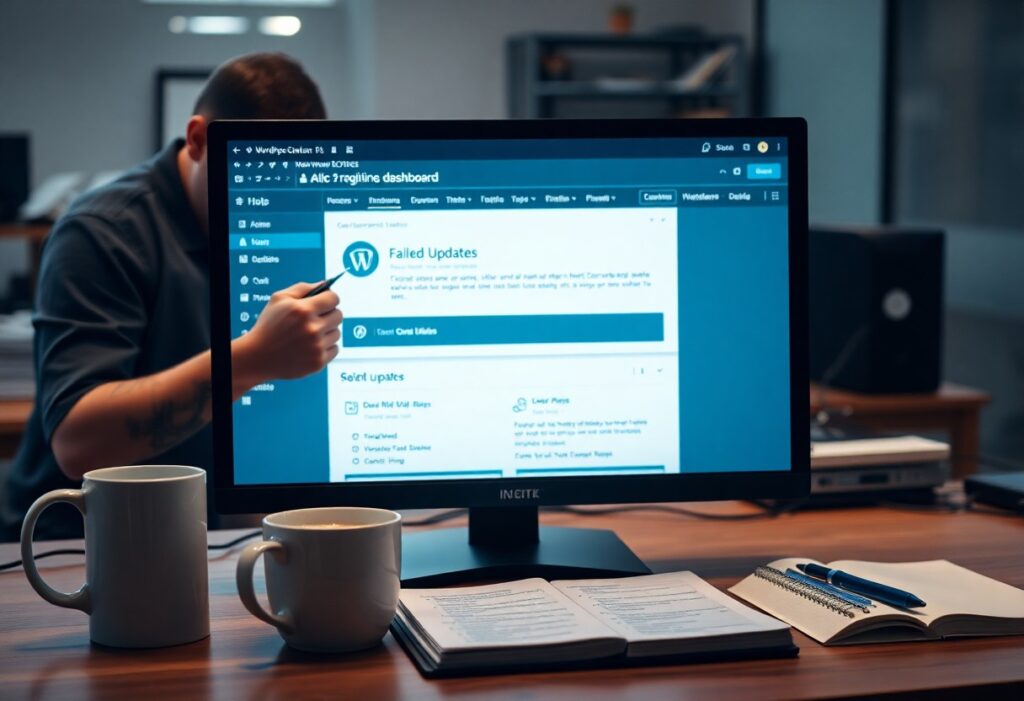SEO issues can severely affect your website’s visibility on Google. If you find that your WordPress site isn’t appearing in search results, it’s imperative to identify and address common problems. This guide will provide you with ten practical fixes that can enhance your site’s presence and ensure potential visitors can find your content. By implementing these strategies, you’ll improve your site’s search engine ranking and drive more traffic to your online presence.
Understanding SEO Visibility
SEO visibility refers to how well your website is indexed and ranked by search engines, ultimately influencing its appearance in search results. Achieving strong SEO visibility means that your site can attract organic traffic and potential customers by appearing on the first page of Google for relevant queries. If your website isn’t showing up, there may be underlying issues that need to be addressed.
What is SEO Visibility?
SEO visibility is a metric that indicates how often your website appears in search engine results pages (SERPs) for target keywords. It helps you gauge your site’s performance and effectiveness in attracting visitors through organic search. Monitoring this metric allows you to determine the success of your SEO efforts and identify areas for improvement.
Key Factors Affecting Visibility
Multiple elements influence your site’s SEO visibility, including on-page SEO, backlinks, and content quality. Engaging elements such as meta tags, header tags, and keyword optimization enhance your site’s relevancy. Additionally, securing high-quality backlinks from reputable sites boosts your authority. Without focus on these factors, your site can remain invisible.
- Content Quality
- User Experience
- Keyword Research
Recognizing the significance of these key factors is crucial for improving your SEO visibility. A well-structured site that prioritizes user experience and high-quality content can outperform competitors, even in saturated markets. Research shows that websites with optimized content can attract up to 80% more organic traffic.
- Backlinks
- Mobile Optimization
- Page Load Speed
Recognizing how these elements interplay will allow you to formulate effective strategies. Factors like mobile optimization and high page load speed impact user engagement and bounce rates, directly affecting your site’s search ranking. Ensuring your site meets user needs while adhering to SEO best practices sets you up for success.
How to Check Your Site’s Visibility
Assessing your website’s visibility is fundamental to pinpointing SEO issues. Start by querying your site in Google using the exact URL to see if it appears in search results. This basic check often reveals immediate obstacles, such as indexing problems. You can also explore additional tools for a thorough analysis, providing insights into how search engines perceive your content.
Using Google Search Console
Google Search Console offers valuable data about your site’s indexing status and visibility. By verifying your site here, you can access performance metrics, see which keywords lead users to your content, and identify errors that might hinder your search visibility. Monitoring this tool regularly helps maintain a healthy online presence.
Analyzing Your Site’s Performance
Site performance analysis encompasses understanding various metrics, including click-through rates (CTR), impressions, and keyword rankings. Focus on your site’s average position for relevant queries; a significant drop can indicate issues that need to be addressed. You might also evaluate user engagement metrics, such as bounce rates or time on page, to uncover potential content or design flaws that detract from your site’s visibility.
Utilizing tools like Google Analytics alongside Google Search Console allows for a comprehensive view of your site’s performance. Look at your CTR: if it’s low despite high impressions, it may signal a need for better meta descriptions or titles. Also, assess which pages attract the most traffic and which ones lag behind. By optimizing these underperforming pages, you can significantly improve visibility and user engagement over time.
Tips for Improving Your WordPress Site’s SEO
Improving your WordPress site’s SEO requires strategic actions. Implement the following best practices to boost your visibility and ranking:
- Integrate keywords naturally into your content.
- Utilize meta tags for improved indexing.
- Create quality backlinks to enhance authority.
- Prioritize mobile optimization for better user experience.
- Leverage schema markup to define your content.
Recognizing these practices can lead to measurable improvements in your site’s SEO performance.
Optimize Your Content
Content serves as the backbone of your website. Use relevant and high-ranking keywords throughout your articles, headings, and image descriptions to enhance visibility. Aim for an ideal length of 1,500 words or more for in-depth topics while ensuring engagement through a conversational tone. Regular updates to your content keep it fresh and relevant, which search engines favor.
Enhance Your Site’s Speed
A fast-loading website enhances user experience and influences search engine rankings. Implement caching plugins, optimize images, and minimize CSS and JavaScript to boost your site’s loading speed. Google states that a one-second delay in load time can lead to a 20% decrease in conversions; thus, ensuring your site loads under three seconds is vital for retaining visitors.
Factors to Consider for Better Indexing
To enhance your site’s visibility on Google, focus on a few key factors that contribute to improved indexing. These include high-quality content, proper keyword usage, and overall site structure. Additionally, ensure that your website loads quickly and is mobile-friendly. A reliable hosting service can greatly influence performance. Implementing these strategies helps ensure that your pages are effectively crawled by search engines.
- High-quality content
- Keyword usage
- Site structure
- Website loading speed
After addressing these elements, your site is more likely to be indexed properly.
Sitemap Submission
Submitting a sitemap to Google Search Console can significantly enhance your site’s discoverability. A sitemap acts as a roadmap, guiding search engines to your important content. Create and submit your XML sitemap, ensuring it includes up-to-date URLs. This makes it easier for Google to crawl your site efficiently and index your pages accurately.
Robots.txt Configuration
Configuring your robots.txt file correctly is important for effective indexing. This file instructs search engines on which pages to crawl and which to ignore, preventing exposure of unwanted content. A misconfigured robots.txt can inadvertently block search engines from indexing crucial sections of your site, ultimately harming your SEO efforts. Make sure you review your settings to optimize your visibility.
To ensure your robots.txt file works effectively, verify it via Google Search Console. Use the “robots.txt Tester” feature to see how search engines interpret your directives. Be cautious when disallowing directories that may contain valuable content or resources, as this could severely impede indexing. Regular audits of your robots.txt file help maintain optimal search visibility.
How to Fix Common SEO Issues
Fixing common SEO issues can significantly enhance your WordPress site’s visibility. Start by identifying the problems using tools like Google Search Console or SEMrush. Address factors such as technical SEO, content optimization, and backlink profiles. By systematically targeting these areas, you’ll create a more robust website that provides value to both users and search engines.
Addressing Duplicate Content
Duplicate content can confuse search engines and dilute your site’s authority. Use tools like Copyscape to identify duplicate text across your website and the web. Implement canonical tags to signal to search engines which version of the content should be prioritized, ensuring your chosen URLs receive the appropriate ranking signals.
Managing Meta Tags Effectively
Effective management of meta tags directly influences search engine rankings and click-through rates. Focus on crafting unique title tags and meta descriptions for each page, incorporating relevant keywords. Ensure your title tags are around 50-60 characters and meta descriptions about 150-160 characters. Avoid keyword stuffing, as search engines favor natural language that accurately summarizes your content.
Optimizing meta tags isn’t just about length; consider clickability as well. Phrases that create a sense of urgency or offer solutions tend to perform better. Utilize action words or questions to engage your audience. Tools like Yoast SEO can assist in checking your tags and ensuring they adhere to best practices while enhancing your click-through rates.
Utilizing SEO Plugins for WordPress
SEO plugins are crucial tools that can enhance your WordPress site’s search engine visibility. By simplifying complex optimization tasks, these plugins provide user-friendly interfaces and valuable features like keyword analysis, content optimization, and XML sitemap generation. Leveraging these resources can significantly improve your site’s chances of ranking higher on Google.
Recommended Plugins
For optimal SEO performance, consider plugins such as Yoast SEO, All in One SEO Pack, and Rank Math. These plugins offer comprehensive features that enable you to optimize your content, improve readability, and manage meta tags efficiently, making them valuable assets for elevating your site’s visibility.
Configuring Settings for Success
Proper configuration of your SEO plugin settings directly impacts your site’s performance. Tailor features like keyword optimization, sitemap submission, and social media integration to align with your target audience. Ensure that you set up the plugin to automatically generate sitemaps and manage redirects, maximizing your visibility potential.
Configuring your SEO plugin involves selecting the right keywords relevant to your niche and implementing them effectively throughout your site. Take time to customize the meta titles and descriptions for each page, ensuring they accurately reflect the content while incorporating primary keywords. Regularly update your settings based on evolving best practices and monitor your site’s performance to refine your strategies.
Conclusion
On the whole, resolving visibility issues for your WordPress site involves addressing fundamental SEO practices. By ensuring your site is indexed, optimizing for keywords, improving page speed, and utilizing proper metadata, you can enhance your chances of appearing on Google. Regularly auditing your site and keeping up with SEO trends will help you maintain visibility and attract your target audience effectively. Implement these fixes, and you’ll be on your way to increasing your site’s presence on search engines.
FAQ
Q: Why isn’t my WordPress site indexed by Google?
A: Your site may not be indexed due to a ‘noindex’ setting in your site’s settings or robots.txt file blocking search engines. Check your site visibility settings in the WordPress admin panel under Settings > Reading.
Q: How can I check if my site is indexed?
A: Use the site:yourdomain.com search query in Google. If no results appear, your site may not be indexed, or there are issues preventing it from appearing.
Q: What role does my site’s loading speed play in visibility?
A: Slow-loading sites can negatively impact user experience and SEO. Use tools like Google PageSpeed Insights to analyze and improve your site’s loading speed.
Q: Can plugin conflicts affect my site’s visibility?
A: Yes, certain plugins can create conflicts that affect your site’s performance and indexing. Deactivate plugins one by one to identify any issues.
Q: What is the importance of having a sitemap?
A: A sitemap helps search engines understand your site’s structure and index your pages efficiently. Use an SEO plugin to generate a sitemap and submit it to Google Search Console.
Q: How does content quality impact my site’s visibility?
A: High-quality, relevant, and original content is important for SEO. Ensure your content answers users’ questions and is well-structured with proper headings and keywords.
Q: What are some common SEO mistakes to avoid?
A: Common mistakes include duplicate content, insufficient internal linking, poor mobile optimization, neglecting image alt tags, and ignoring schema markup. Assess your site for these issues to enhance visibility.




